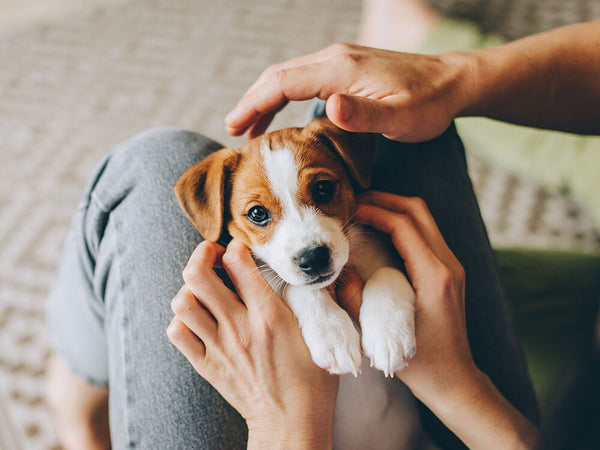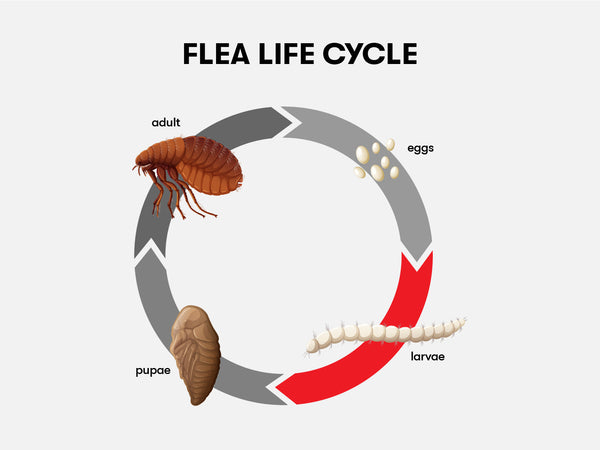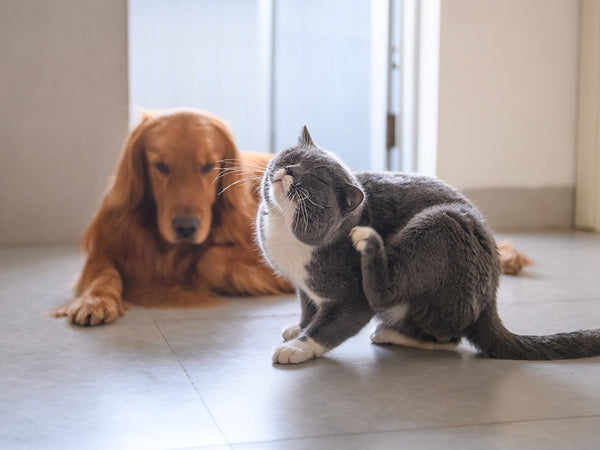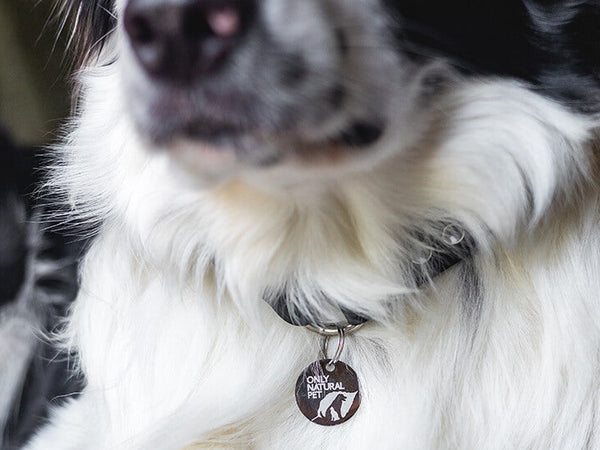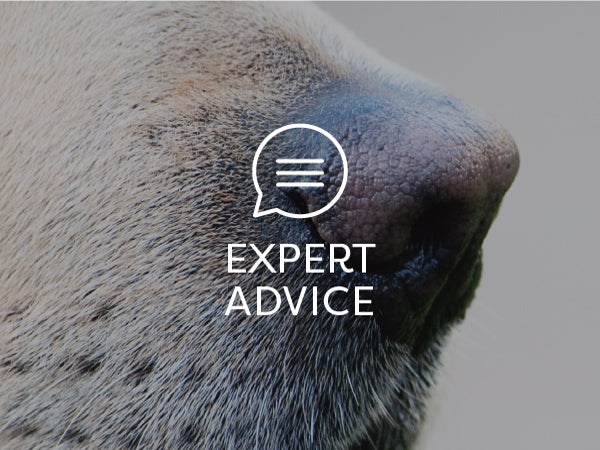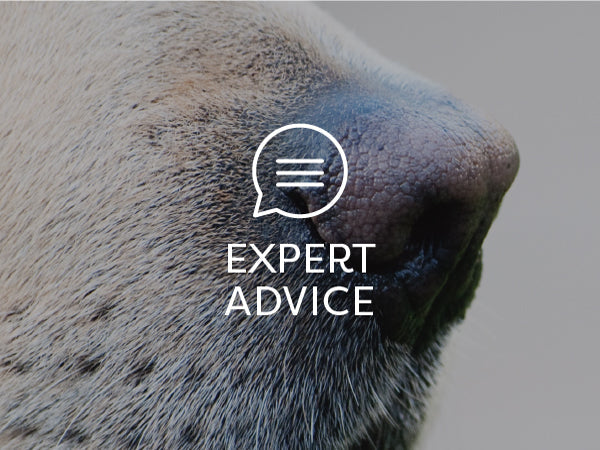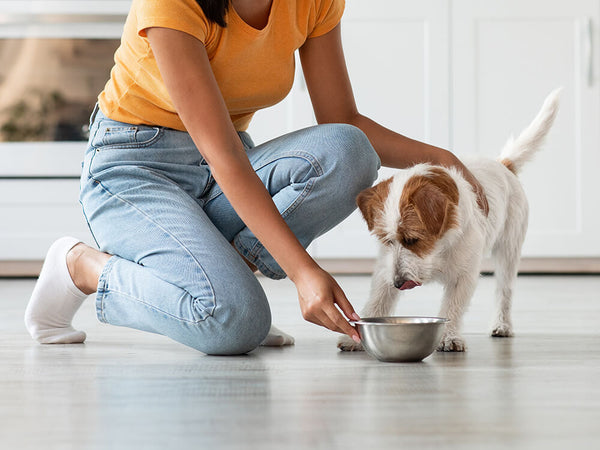The Fundamentals of Natural Pet Care
Written by: Dr. Jean Hofve, Holistic Veterinarian, DVM
"Natural Pet Care is a concept that involves every aspect of our pet's lives, with the intention of coming as close to their natural environment as possible, while still providing safety and comfort."
Diet
The modern world seems about as far from natural as we can get. Where our dogs’ and cats’ ancestors and cousins would be living in the wilderness and hunting for their food, today most pets spend the majority of their time indoors and have their meals served to them!
Natural Pet Care is a concept that involves every aspect of our pet's lives, with the intention of coming as close to their natural environment as possible, while still providing safety and comfort. It includes nutrition, exercise, veterinary care, dental care, grooming, mental stimulation, and stress management. Let’s look at each of these factors individually:
Nutrition
Diet is the foundation of health. Nothing can replace a fresh, healthy diet when it comes to promoting health and warding off both acute and chronic disease. No matter what supplements, herbs, or remedies you give your pet, her body cannot heal without “good groceries.”
Nutrition Rule #1 is that the fresher the food, the greater the nutrition.
Here’s a freshness scale for evaluating your pet’s diet, from 1 to 5, with 1 being the best:
Consuming the same food, day after day, year after year, can contribute to the development of food sensitivities and allergies, inflammatory bowel disease, and other health issues. Feed a variety of main protein sources and, for dogs, vegetables as well. Until your pet’s system becomes healthier and more able to handle change, transition between foods gradually to avoid tummy upset.
Supplements
No diet is perfect; appropriate supplements can add tremendous value and keep your pet in tip-top health:
-
Digestive Support: Every dog or cat that is eating a processed food (anything other than raw or lightly cooked) diet should receive digestive enzymes and probiotics with every meal. This will not only improve digestion and the assimilation of nutrients, but it may also help protect against the development of allergies and immune disorders. Improving digestion and utilization of nutrients can help to prevent and eliminate a host of diet related problems such as eating stools, body odor, excessive shedding, flatulence and itchy skin. Digestive enzymes and probiotics are a crucial part of improving digestion and gastrointestinal health. Click to view gastrointestinal support.
-
Essential Fatty Acids: These fats are required in the diet; they cannot be produced by the body (hence the “essential” in the name). EFAs are needed for proper formation of cell membranes, are precursors for numerous hormones involved in pain regulation and other processes, aid in proper cardiovascular function, and nourish the skin and coat as well as the lining of the digestive tract. In addition, omega 3 fatty acids such as EPA and DHA are powerful anti-inflammatories that can help delay or minimize many chronic health challenges, especially those associated with aging. The best source of omega 3 fatty acids for dogs and cats is marine oils, such as wild salmon oil, or cold water fish oil blends. Our pets do not convert the fatty acids in plant oils very efficiently, such as those in found in flaxseeds, into EPA and DHA, which are crucial for good health. Click to view essential fatty acids for dogs or essential fatty acids for cats.
-
Multi-Vitamins: Even the best diet for our dogs and cats can be lacking in some essential vitamins and minerals. Many whole food sources no longer contain the high vitamin content they did in the past due, to depleted soils and modern farming practices. A good multi-vitamin/mineral supplement ensures the body has everything it needs for proper cell and organ function. It will keep your companion healthier, possibly reducing your veterinarian visits—and costs—in the long run. If you are unsure about choosing the proper diet and supplements for your companion, consulting with a holistic veterinarian can set you and your companion on course with a healthy program that meets your lifestyle and your companion’s health needs. Click to view multi-vitamins for dogs or multi-vitamins for cats.
Exercise
Our pets need adequate exercise as much as we do. The amount and type of exercise your pet should get depends on age, breed, temperament, weight, and social factors.
For example, a young border collie needs a great deal of activity that engages its mind, such as dog agility training; while a middle-aged pug may be fine with a short daily walk. Research your dog’s breed to understand more about its temperament and exercise needs; but also take into account those other factors.
If you have two or more dogs who play together vigorously several times a day, you may be able to provide a smaller portion of less strenuous activity—although walks and play time with you are still vital to your dog’s overall health. We have a wide selection of outdoor gear for dogs, and interactive toys for dogs.
Don’t forget that cats need exercise, too. Interactive play sessions with fishing-pole type toys like Go Cat Da Bird not only provide exercise, but also deepen the bond with you; and perhaps most importantly, satisfy those strong hunter instincts to create a calmer, more confident cat. If you have a young, athletic cat like a Bengal or Siamese, consider cat agility or a cat exercise wheel (basically an oversized hamster wheel; check out this video of an exercise wheel).
Your pet’s energy level and weight will give you an overall picture of whether his exercise regimen is adequate.
Veterinary Care
With the current controversy surrounding annual vaccinations, many people are electing to have their pets get fewer vaccines. This has led to the assumption that they don’t need to bring them in for an annual examination.
However, even if your pet is not getting any vaccines, it is still essential that your veterinarian have the opportunity to give your animal companion a thorough examination at least every year (more often for chronically ill or older pets).
By checking your pet regularly, your veterinarian can catch potential problems early. For instance, it is estimated that 85% of dogs and cats who go to the vet for any reason are also found to have significant dental disease. Left untreated, it can lead to painful tooth decay as well as systemic illness due to chronic infection.
It is your choice whether or not to let your veterinarian vaccinate your pet. Core puppy and kitten vaccines are recommended, because the viruses in those vaccines are life-threatening. Rabies vaccines must be given in compliance with local and state laws. Non-core and booster vaccines are not necessary for the vast majority of dogs and cats. For more information on the risks and benefits of vaccines, please see our article on pet vaccinations.
Dental Care
Keeping your pet's teeth and gums healthy requires a commitment on your part. Special "tartar control" diets or treats are not enough. Bacteria are always present in the mouth, and within hours of a professional cleaning, they are already hard at work creating plaque, a sticky deposit on the teeth. In just 24 hours, the plaque starts to harden into tartar (calculus). Daily tooth brushing and regular veterinary checkups are essential. Your vet can help you choose products and give you instructions on how to brush, along with tips for getting pets to accept the treatment.
There are also dental products that have been developed to help combat plaque build-up in pets’ mouths. Only Natural Pet has a wide selection of dental care products. Learn more about pet dental health care in our Holistic Healthcare Library.
In some areas, anesthesia-free teeth cleaning is available. A properly trained technician can do quite a lot for pets who are willing to sit still for it. But ultimately, most pets will need regular professional cleaning under anesthesia at your veterinarian’s clinic.
Grooming
Regular combing and brushing is a must for many breeds of dogs and cats. Brushing is fine for short-coated animals, but for the overly-furred, only a comb or sturdy metal-toothed slicker brush will get down to the skin and pull out the dead hair. It is especially important to be vigilant about grooming during the spring and fall shedding seasons.
Dogs and cats need regular claw care. Cats' claws are curved, and can actually grow in a circle and back into the paw pad, causing a painful abscess. But you just have to take a look every week or so, and trim when and where needed. It’s best to accustom pets to nail-trimming when they’re young, but even older animals can learn to tolerate it. Do not let it become a battle; if your pet resists, let it go for another time. You can always catch them napping, and just trim one or two nails at a time. Only Natural Pet Store has a wide selection of grooming products
Mental Stimulation
Lack of mental stimulation can cause significant physical and behavioral problems. Working and herding breed dogs in particular need to have a job to do. If you don’t give one, they’ll make one up—and you might not like the activity they choose, such as “furniture design by mouth”!
For dogs, one of the best ways to stimulate their minds is proper training. EVERY puppy should go through a “puppy class” at the very least. Even when you adopt an older dog, both you and the dog can benefit from a consultation with a good trainer or behaviorist. These professionals help you interpret the dog’s behavior and teach you how to communicate in ways that your dog can understand.
Cats are not as easily trained, although it’s not impossible, and it can be very helpful for active breeds like Orientals and Bengals. Play therapy—regular interactive play sessions—lets cats satisfy their inner hunter. This provides exercise, boosts confidence, and reduces stress and stress-related behaviors such as aggression.
“Indoor enrichment” is essential for pets who spend most or all of their time inside. This may include: food-dispensing toys; sensory enrichment (such as a window perch for bird-watching, pet-directed videos, toys, and--for cats--posts, trees or shelves for climbing; and novel objects (like cardboard boxes or paper bags).
Stress Management
You may look at the cat sprawled in a patch of sunlight on the sofa, or the dog curled up at your feet, and wonder, “What stress?” Yet our furry companions can and do experience stress as much or more than we do. For instance, dogs with separation anxiety live in extreme stress for a good portion of every day their guardian is away at work or school. Cats in multiple-cat households are frequently stressed over too-small territories (adding cat furniture and other vertical space can be very helpful).
It’s been abundantly proven that stress suppresses the immune system. Of course, both cats and dogs are acutely aware of the stress levels of their human companions—the more stressed you and other family members are, the more your cat or dog feels, absorbs, and manifests that stress—whether by acting out behaviorally or internalizing it as illness. Managing our own stress may be the most important step we can take to improve our pets’ well-being.
Training, interactive play and other exercise, and mental stimulation are all crucial parts of stress management for pets.
Holistic therapies such as stress reducing herbs, stress reducing homeopathy, and flower essences are valuable tools for animals whose stress is affecting their health or behavior. Pheromone sprays can also create a calm, non-threatening environment for nervous or aggressive pets. Click here to see products that help reduce stress.
As mentioned above, “Indoor enrichment” is essential for both dogs and cats who spend most or all of their time inside. Also called “environmental enrichment,” the goal is to reduce mental and emotional stress. Components may include: food-dispensing balls and Kong toys; sensory enrichment (such as a window perch for bird-watching, pet-directed videos, and cat furniture for climbing and scratching, as well as to increase vertical territory); and novel objects (like cardboard boxes or paper bags). But quality play and petting time with the human family is truly the most important “enrichment” tool of all.





